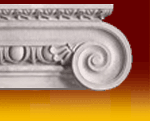|
| Click picture for larger view |
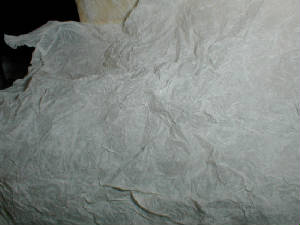
|
Unfold paper carefully. Do NOT stretch out the paper yet! The texture of the stucco or stone wall depends
on how bumpy or thin your paper is, so decide on how rough or smooth you want the surface to be, and then stretch until you
are satisfied with the effect.
|
| Click picture for larger view |
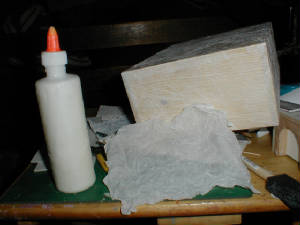
|
Spread glue onto the wood (or illustration board) and, carefully, apply crumpled paper. Pat down paper, do NOT
rub!!! At this point make sure that the paper is adhering to the box. Smooth or pat down more forcefully to eliminate
bubbles, if necessary. Do not worry if wood is visible through paper, the paint will cover it completely.
Note: At this point, you must decide if you wish to add a coat of diluted glue to seal the paper.
If you choose not to do so now, you can always apply a final coat of sealant after faux finish is applied.
|
|
| Click on picture for larger view |
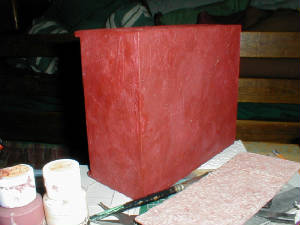
|
After paper has dried thoroughly (I like to dry it overnight), now you are ready to start painting. Use the
foam brush to apply the base color. Do not load up the brush too much, especially if you opted for not applying a sealant
at this point -- craft tissue paper is quite thin and fragile). Note: I applied red because I
was thinking along the lines of red/orange (sun, warmth, etc) but I did not like the results ... so ...
|
| Click on picture for larger view |
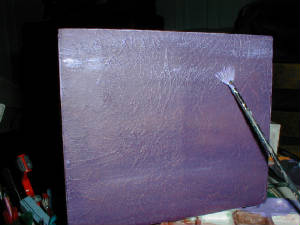
|
I decided to make purple the base color, since it reminds me of grapes, which are abundant in Tuscany. After the
base color was thoroughly dry, I highlighted (dry brushed) the textured surface with lavender,
which I applied with a fan brush.
|
|
| Click on picture for larger view |
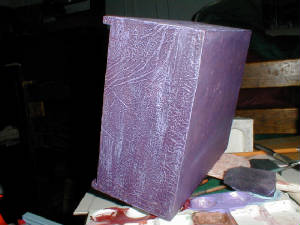
|
Now you can see more clearly the highlighted texture. I used a slightly lighter shade to give it a bit more depth.
When I use this technique to simulate an old wall I will use 5 or 6 different shades -- starting with the darker color first
and then applying increasingly lighter shades. I then do a light wash (watered down paint) of the dark color to age
it.
|
| Click on picture for larger view |
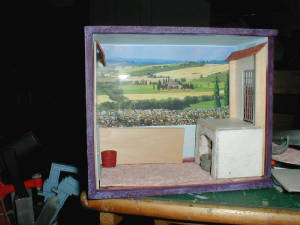
|
Now that the exterior is done, I can concentrate on the interior.
|
